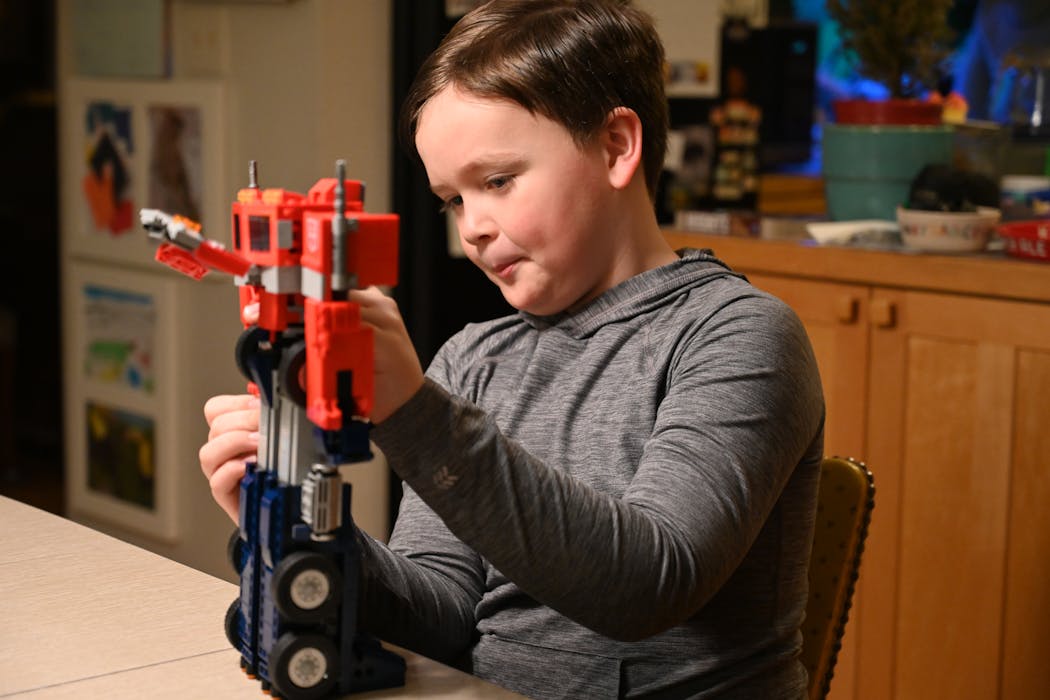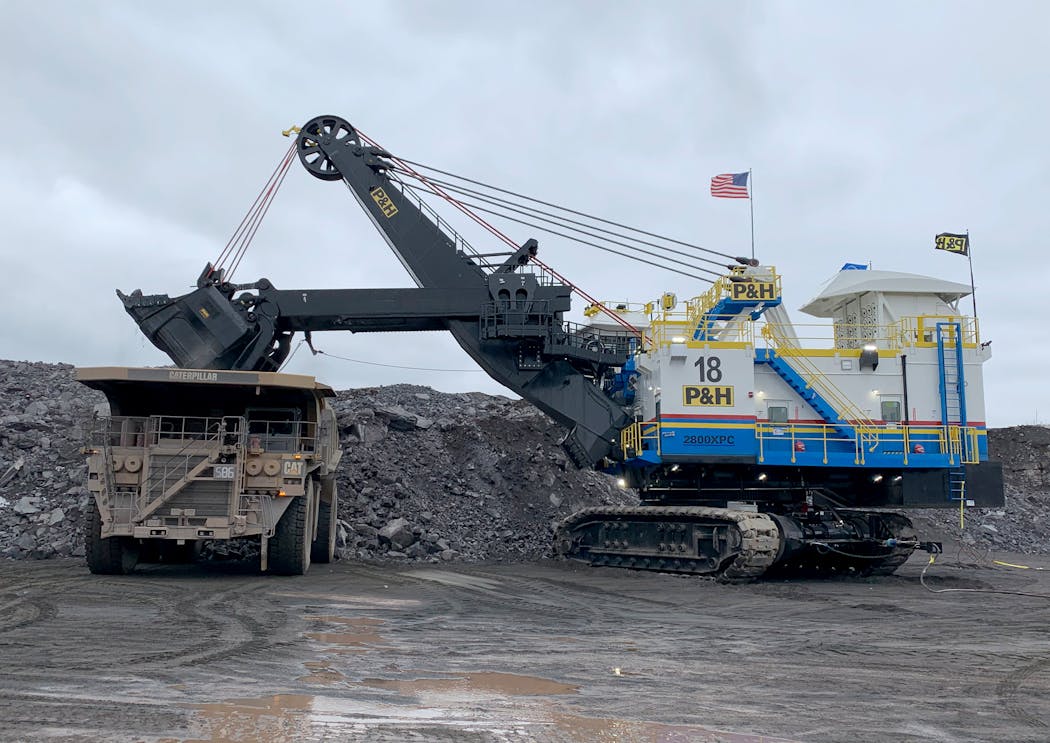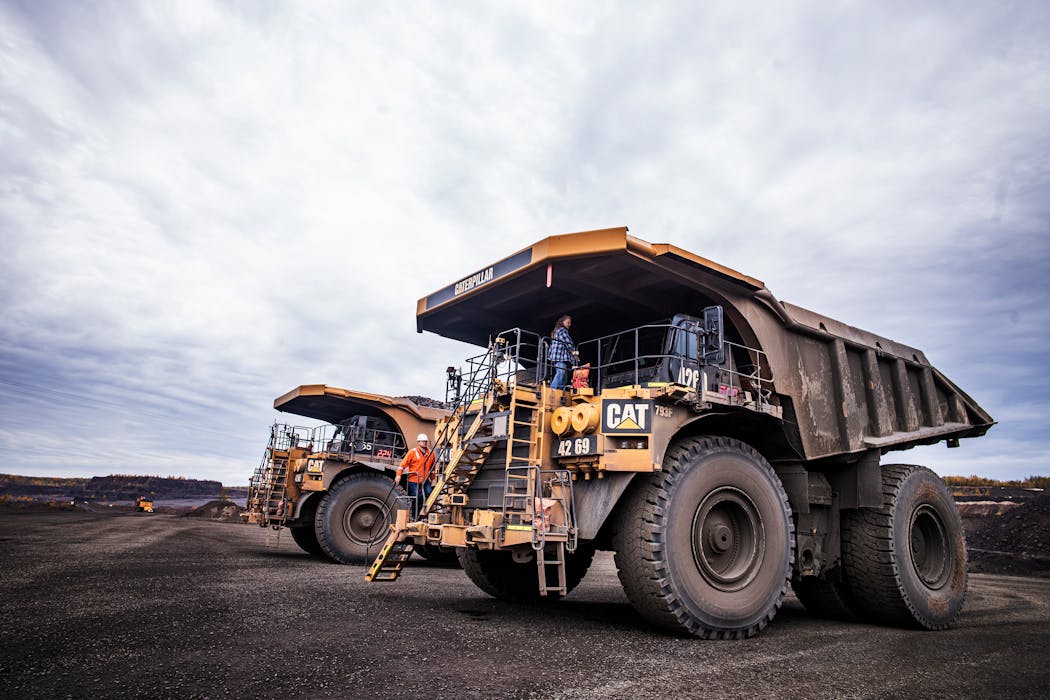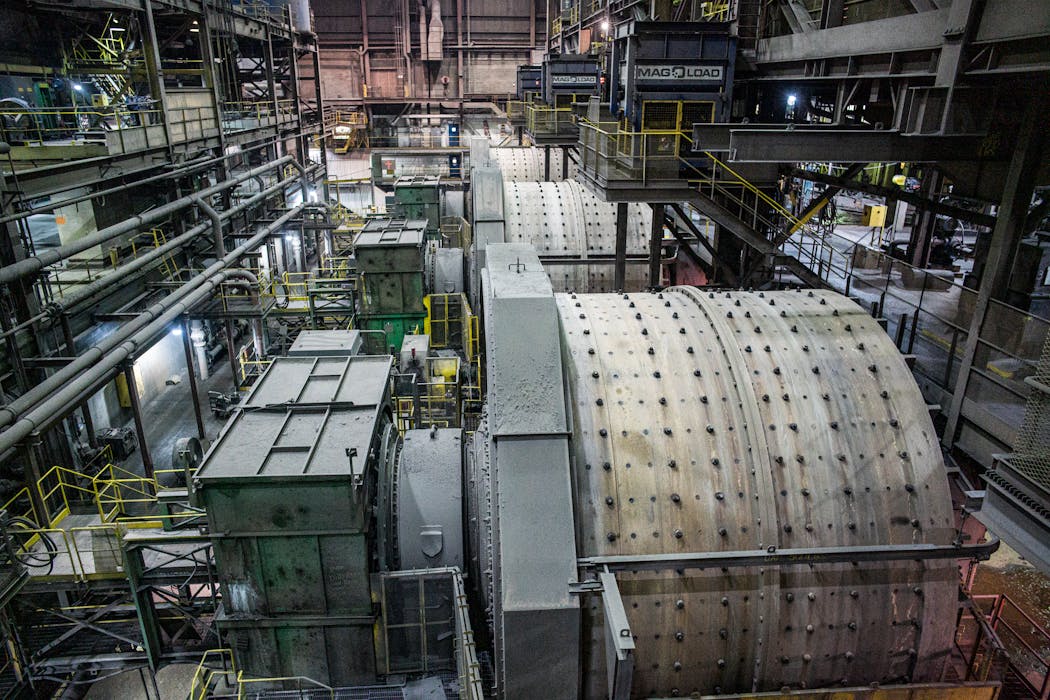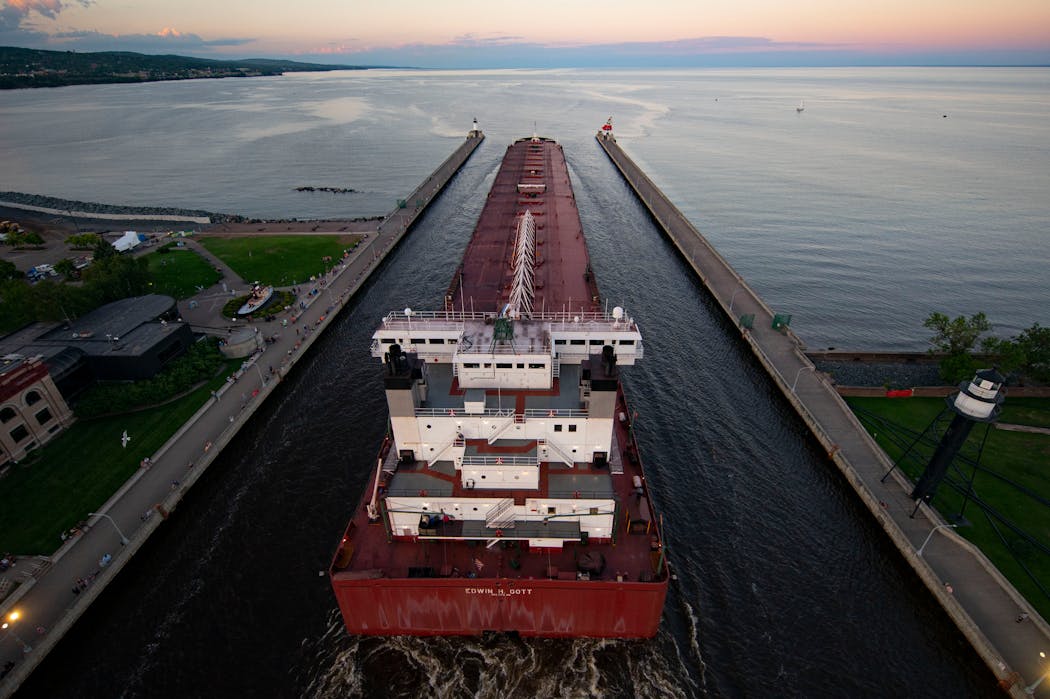What is the largest machine in Minnesota?
Listen and subscribe to our podcast: Via Apple Podcasts | Spotify | Stitcher
The magic of Curious Minnesota is that even a child's Christmas gift can inspire a thought-provoking question about our state — forcing us to re-examine things we take for granted.
Ever since Julien Munson, 8, unwrapped a Transformers Lego set over the holidays, the Munson family of St. Louis Park has been discussing an immense issue: "What is the largest machine in Minnesota?"
The toy that got them talking is a replica of Optimus Prime, the head honcho of the Autobots in Transformers lore. Prime is a monumental machine who morphs into a semitrailer truck and, of course, battles Decepticons.
Julien's father Nathan Munson wanted to know if Curious Minnesota, the Star Tribune's reader-powered reporting project, could hunt down Minnesota's mega-machines. (He would like to plan a family trip to see one, if possible.)
Challenge accepted.
The question is a tricky one in part because machines are almost everywhere we look (scissors are technically a machine, for example). And many machines are composed of other machines. We started our brainstorming on Twitter, where folks chimed in with many good candidates.
The query intrigued University of Minnesota mechanical engineering professor Tom Chase enough to consult his dictionary. Chase has taught machine design for more than 40 years, but he does not explicitly define machines for his students.
"There's multiple definitions," Chase said. "The first one I really like, which is: 'An assemblage of parts that transmit forces, motion and energy, one to another, in a predetermined manner.' "
How someone interprets that definition is important to the answer of the question.
Notably, some believe that the electrical grid is Minnesota's largest machine. After all, the wires powering our homes are part of a 5,800-mile network of transmission lines in the state that could stretch across the United States twice. They are hooked into machines at power plants, which all run on a synchronized frequency.
"[People] don't think of the electric grid as containing the power plants. But that is really what makes the grid a machine," said Teresa Mogensen, Xcel Energy's senior vice president of energy supply.
Chase and his colleague, mechanical engineering Prof. Kim Stelson, did not think the grid should qualify, however, because a machine should have moving parts. Chase noted that computers would also be excluded under this reasoning, which some readers may dispute.
"There are certainly machines included in the electrical grid. But I wouldn't think of the grid itself as a machine," Chase said.
Mammoth mining
Many Twitter users suggested that the largest machine likely resides on the Iron Range.
The largest mobile machine being used on the Range is an electric rope shovel which is 43 feet wide, 88 feet long and 62 feet tall. U.S. Steel uses eight of these P&H 2800XPC units at its Minntac mining operation, which each weigh 2.2 million pounds and can lift 65 tons per scoop.
Those shovels dump crude iron into a fleet of haul trucks, which are giants themselves. The Caterpillar 793F trucks, which are commonly used on the range, are 25 feet wide, 44 feet long, and 21 feet tall.
"It would be like sitting on the second story of your house with a steering wheel and driving it," said Mike Bakk, U.S. Steel's Minnesota-based operational readiness director.
The Range boasts some very long machines, too. Conveyors at Minntac carry rock up to 1,350 feet from one crusher to another. At U.S. Steel's Keetac operation, marble-size balls of concentrated ore are hardened in a large furnace, passing through a 160-foot heating grate and then a 130-foot kiln.
Big machines also help crush and mill the ore into smaller pieces. The largest processing machines on the range are grinding mills that pulverize rock. They have a diameter of 27 feet at their widest point and are 30 feet long. A new grinding mill being installed now will stand over 80 feet tall.
Whoppers on the water
Some mega-machines are well known.
The Aerial Lift Bridge in Duluth, for example, is one of the state's most recognizable landmarks. It is also the largest mechanical bridge in Minnesota, according to the Minnesota Department of Transportation, with a movable span that raises and lowers to allow ships to pass. This massive machine is 225 feet high and 502 feet across.
Those big ships warrant a mention, too. The Duluth-based Edwin H. Gott lake freighter, for example, is just over 1,000 feet long and 105 feet wide at its midpoint. It is the most powerful ship on the Great Lakes, sporting two 10,000-horsepower engines, according to Jayson Hron, communications director for the Duluth Seaway Port Authority.
Metropolitan giants
Major machines are also integral to Minnesota's tallest buildings in downtown Minneapolis: IDS Center and Capella Tower. Some of the elevators that transport people up and down Capella Tower travel 720 feet, according to a representative for the firm that built and maintains the elevators.
Other downtown Minneapolis machines are hidden in plain sight. Sports fans at Target Center, for example, may not realize that the arena's floor (225 feet by 88 feet) moves up and down to improve sightlines for basketball and hockey. The process, which relies on an electric motor connected to screw jacks, takes about 25 minutes, according to Assistant General Manager Amy Rahja.
Becker behemoths
Returning to the electrical system, the largest individual machine keeping the lights on in Minnesota is likely unit three at the Sherco coal plant in Becker, which Xcel co-owns with the Southern Minnesota Municipal Power Agency. At the core of the 309-foot-tall complex is a massive boiler that generates steam to power turbines housed below it, according to Xcel. Sherco 3 alone can power more than 600,000 homes.
Ever wonder what happens to junked automobiles? It takes a pretty massive machine to grind them up into recyclable bits.
Northern Metal Recycling, which recently exited north Minneapolis amid pollution concerns, has built a new steel shredder in Becker that can pulverize a car into 3-inch pieces in eight seconds, according to engineering firm SEH. SEH describes it as "one of the largest shredders in the country." Northern Metals' parent company did not respond to an inquiry about its size.
Do you know of other giant machines lurking out there in Minnesota? Please tell us about them! Send us a note at curious@startribune.com and we will revisit this mechanical mystery in a future column.
If you'd like to submit a Curious Minnesota question, fill out the form below:
Read more Curious Minnesota stories:
How do cities make Mississippi River water safe to drink?
From bankrupt racetrack to aviation hub — what remains from MSP Airport's early days?
Where does Twin Cities electricity come from and how is it delivered to homes?
Is Duluth the most inland seaport in North America?
Why do we have water towers and what do they do?
When you flush a toilet in the Twin Cities, where does everything go?

